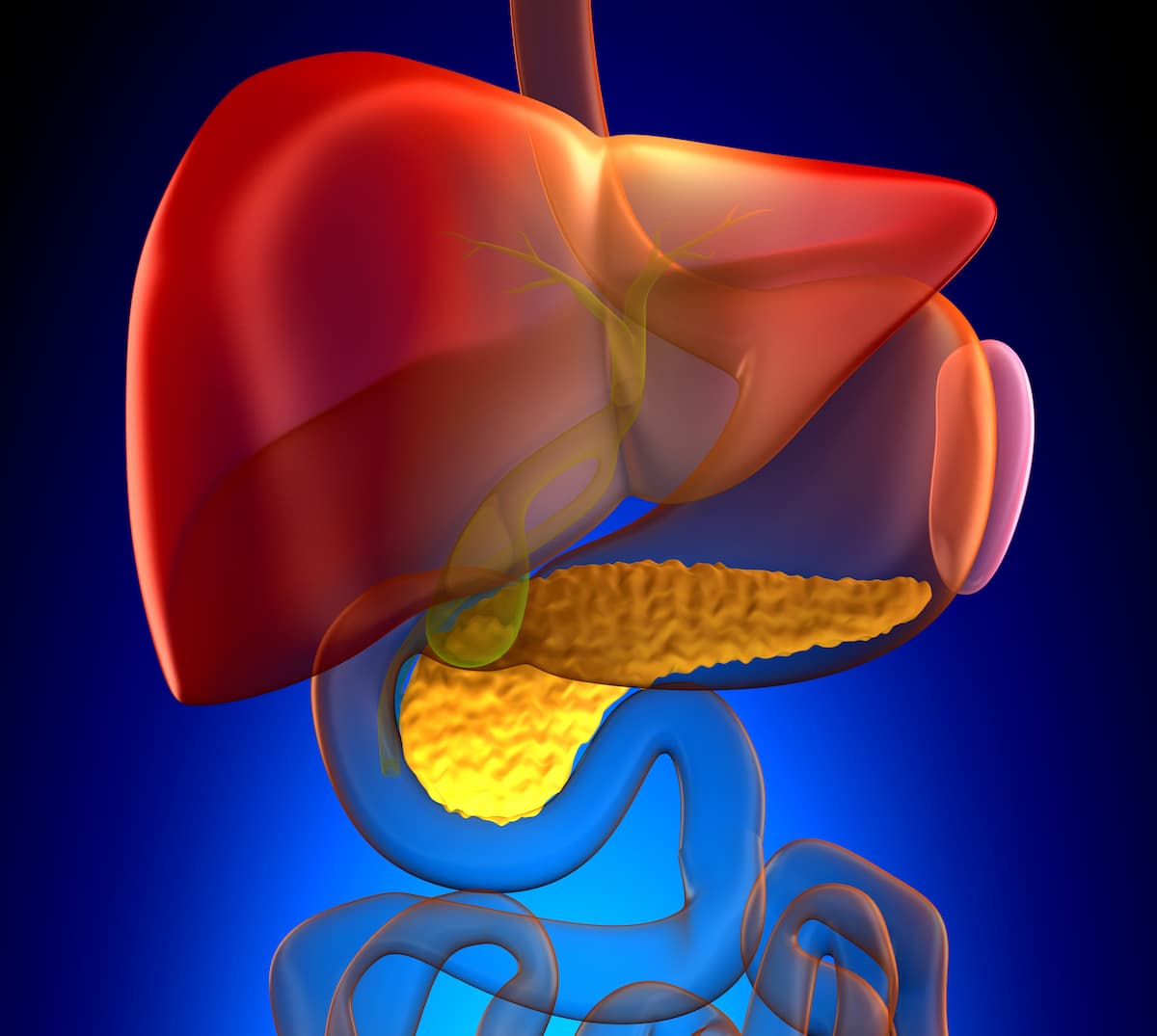Postoperative IMRT Improves RFS in Hepatocellular Carcinoma
At 1 and 2 years, patients with hepatocellular carcinoma and narrow surgical margins experienced encouraging recurrence-free survival rates following adjuvant radiotherapy in the phase 2 RAISE trial.
“Postoperative adjuvant IMRT could improve RFS benefit for [patients with] HCC with narrow surgical margins with acceptable toxicity,” according to Ming Kuang, MD, PhD.

Administering intensity-modulated radiotherapy (IMRT) to patients with hepatocellular carcinoma (HCC) with narrow margins following curative resection resulted in a recurrence-free survival (EFS) benefit, according to findings from the phase 2 RAISE trial (NCT03732105).
With a median follow-up of 29.4 months, the 12-month RFS rate was 86.9% (95% CI, 76.3%-93.0%) for patients who received IMRT compared with 74.7% (95% CI, 62.8%-83.3%) in those who received active surveillance (HR, 0.55; 95% CI, 0.30-0.99; P = .043). Additionally, the RFS rate at 24 months was 78.7% (95% CI, 65.8%-87.3%) vs 58.4% (95% CI, 45.1%-69.6%) in each respective arm. Investigators presented these data at the 2024 Gastrointestinal Cancers Symposium.
Disease recurrence was highlighted in 21.6% of patients who received IMRT compared with 36.5% in those who were surveilled. Most patients in each respective group had intra-hepatic recurrence (14.9% vs 32.4%). Additionally, marginal intra-hepatic recurrence affected 6.8% and 17.6% of patients, and 4.1% and 8.1% of patients, respectively, died.
Of the patients with disease recurrence who required subsequent treatment, most patients in the radiation and control groups, respectively, received curative surgical resection (31.25% vs 29.63%; P = 1.000), radiofrequency ablation (37.50% vs 18.52%; P = 0.278), and transarterial chemoembolization or hepatic arterial infusion chemotherapy (6.25% vs 29.63%; P = 0.121).
“Postoperative adjuvant IMRT could improve RFS benefit for [patients with] HCC with narrow surgical margins with acceptable toxicity,” presenting author Ming Kuang, MD, PhD, a professor at the First Affiliated Hospital of Sun Yat-sen University in Guangzhou, China, said. “It seems that adjuvant treatment for control of local tumor residues after hepatic resection is important…IMRT may provide a potential option as an adjuvant therapy.”
Investigators of the multicenter RAISE trial evaluated whether adjuvant radiotherapy could effectively control postsurgical recurrence in those with HCC and narrow margins following curative resection. A total of 148 patients were randomly assigned to receive adjuvant IMRT at 50 Gy in 25 fractions (n = 74) or surveillance during follow up for resection (n = 74).
The trial’s primary end point was RFS. Secondary end points included time to recurrence, overall survival, and safety.
Patients with primary HCC who received R0 resection and had a largest resection margin of less than 1 cm were eligible for the trial. Additional eligibility criteria included having an ECOG performance status of 0 or 1, a Child-Pugh score between 5 and 7 enhanced CT/MRI 4 to 6 weeks after resection with no tumor found, and adequate blood, liver, and kidney function parameters. Patients with tumor thrombus in portal vein, hepatic vein, bile duct, or extrahepatic metastases as well those with 4 or more tumors were not eligible to enroll on the trial.
Investigators reported that baseline characteristics were comparable across the radiation and control groups. The mean age was 54.13 years in the IMRT and 54.95 years in the control group. Additionally, most patients in each respective group were male (87.84% vs 90.54%, respectively), had an ECOG performance status of 1 (74.32% vs 77.03%), presence of tumor capsules (75.68% vs 64.86%), and stage IB disease (59.46% vs 55.41%).
In the IMRT and control arms, respectively, the most common any-grade adverse effects (AEs) included alanine transaminase increases (47.62% vs 23.53%), neutropenia (39.68% vs 22.35%), thrombocytopenia (25.40% vs 21.18%), and decreased hemoglobin (22.22% vs 12.94%). Moreover, grade 3/4 thrombocytopenia affected 6.76% and 2.70% of patients in each respective arm.
Reference
Ming K, Peng Z, Chen Z, Shen S, Li B. Adjuvant radiotherapy after curative resection of hepatocellular carcinoma with narrow margin (≤1 cm): a phase 2, multicenter, randomized controlled trial. J Clin Oncol. 2024;42(suppl 3):722. doi:10.1200/JCO.2024.42.3_suppl.722
Adapting to a Robotic Workstation for Image-Guided Liver Cancer Surgery
December 4th 2023Govindarajan Narayanan, MD, speaks to the potential time-saving advantages of using the Epione robot for microwave ablation, cryoablation, and other surgical strategies in patients with liver cancer and other tumors.